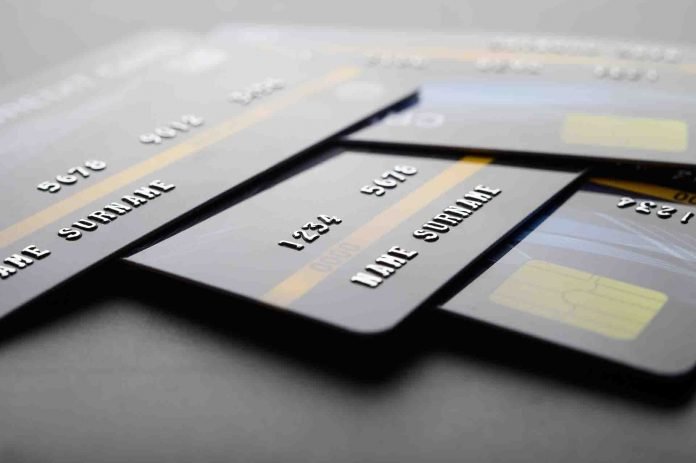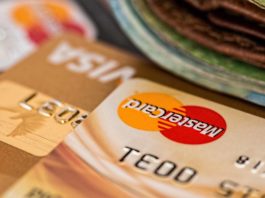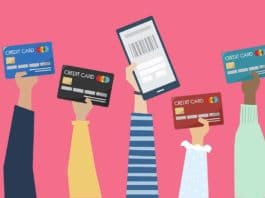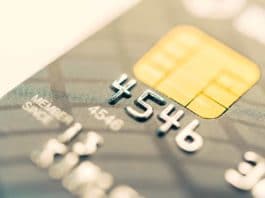Also known as the payment account number (PAN), the embossed long number on the front of your card is packed with essential information strategically organized and internationally standardized.
The card number not only contains data such as who the issuing bank is and your account number, but it is also meticulously put together to help prevent fraud, payment issues, and errors.
Credit Card Number or Primary Account Number (PAN) is the identification number associated with the card and located on the magnetic strip. Your number will contain information about the credit card network and issuer when you swipe your card in a terminal or browser.
The American National Standards Institute and the International Organization for Standardization (ISO) assign credit card numbers.
Your account number is up to seventeen digits and is assigned by your card issuer. Some cards only have seven numbers.
A card identifier is the primary account number or number of the payment card. You can find this on the payment card. This unique card code usually consists of 13, 14, 15, or 16 digits and has 19 digits. The primary account number is also the only number associated with the account. In this case, the term “account number” can be applied to describe the identifier.
See Also: Parts of a Debit or Credit Card and How They Work
Once you know the process behind its development, you can understand a lot from the primary account number. The first digit is considered to be the most important identifier in the industry. The first digit of the credit card number also referred to as the Main Sector Identifier (MII), tells you the type of business to which a card is affiliated.
MII could be, for example, an airline, a banking institution, or a retailer. It also helps to indicate which motherboard network the card belongs to:
- American Express cards start with 3;
- Visa cards start with 4;
- MasterCard cards start with 5;
- Discover cards begin with 6.
What is the structure of PAN?
A credit card has strategically placed numbers, each representing a vital piece of information that allows accurate transactions. From physical properties such as shape and size to the sequence of numbers, all credit cards comply with ISO standards (International Organization for Standardization) and are implemented by ANSI (American Standards Network Institute).
Standardization causes card information to have the same general structure and arrangement so credit cards can be used universally.
There are many details in a credit card number. A credit card number is usually 15-16 digits in length but may be up to 19 digits or 13 digits in some situations. Personal credit card numbers each have their meaning. Understanding the importance of each will give you an inside look at how credit cards work and make it easier to detect fraud.
The first six digits reflect the credit card network of the card. For example, 601100 reflects Discover cards. A last digit is a checksum number that prevents fraudsters from creating fake credit card numbers. The first six-digit numbers and the last digit define the customer’s account. As a result, they are still separate.
Also known as primary account numbers (PAN), the number of credit cards consists of three essential components:
- Information about the card issuer
- Your account information
- A check digit
Digits are classified by ISO or the International Organization for Standardization as follows:
Digits 1 to 6: Issuing Identification Numbers
It represents the network that makes up the primary credit card. The first digit is called the Major Industry Identifier (MII). Each number represents a different sector.
The Major Industry Identifier is known as the first digit of your credit card number (MII). It indicates whether your card is tied to an airline, another type of travel provider, or specific other special interests. It can also explain how the funds can be used and which network the card belongs to.
Most consumers will only encounter cards starting with 3, 4, 5, and 6, except for store-specific credit cards that don’t follow the same rules.
These numbers generally correspond to four main card networks: Visa, Mastercard, American Express, and Discover. But American Express and Discover are distinctive from their more widely accepted counterparts, as you can see below. In particular, multiple digits are required to describe their cards.
0 – ISO / TC 68 and other industry duties
1 – Airlines
2 – Airlines, finance, and other future industry duties
3 – Travel and leisure
4 – Banking and finance
5 – Banking and finance
6 – Sales and banking/finance
7 – Oil and other future industry tasks
8 – Healthcare, telecommunications, and other future industry tasks
9 – For the appointment of national standards bodies
The first digit is different for each card network:
- Visa cards – start with four and has 13 or 16 numbers.
- Mastercard cards – start with five and has 16 digits.
- American Express cards – start with 3, followed by 4 or 7 and 15 digits.
- Discover cards – start with six and has 16 digits.
- Diners Club and Carte Blanche cards – start with 3, then 0, 6, or 8 and has 14 digits.
Digits 2 to 6: Provide an identifier for a specific institution
Together with the first number, these numbers represent the Issuer Identification Number (IIN), also called the Bank Identification Number (BIN). An Issuer Identification Number (IIN) clarifies which credit card company a card comes from, which is not always clear.
The Issuer Identification Number (IIN) or Bank Identification Number (BIN) of a card shows the credit card business from which it comes and describes the card network to which it belongs.
The IIN numbers for each of the four main networks are organized according to:
- Visa uses the numbers 2 through 6 as the bank identification number.
- Mastercard uses the numbers between 2 and 3 or 2 and 4, 5 or 6.
- American Express uses 3 and 4 to identify the card’s brand: American Express Platinum card, Delta Card, etc.
Digits 7 to 15: Unique Personal Identifiers
The seventh and all subsequent numbers in a card number, except the last one, identify the individual account in question. You will see just a few of these numbers on your monthly statement. According to Discover, there are 1 trillion possible account numbers for every credit card issuer.
Digits 7 to 15 is your personal account number. Along with the last digit of the card number, the last three may have up to 12 digits to be added to your monthly statements. While your account number will change when you buy a new credit card due to the original card’s loss or theft, you will not be opening a new account.
- Identify the name of the cardholder.
- Issuer specific
According to ISO / IEC guidelines, all credit card issuers move from a six-digit IIN or BIN to eight digits. This move was made to increase and prevent future IIN / BIN shortages.
Note that in April 2022, Visa will begin allocating eight-digit BINs.
Except for the last digit, the remaining numbers are specific to your credit card account. The issuer chooses them.
Digit 16: Check Digit
This last digit verifies the correctness of the card numbers to ensure they were not entered incorrectly. The last digit of the 16-digit PAN is the check digit, an integral part of a checksum that helps ensure a credit card number’s validity.
The last number helps secure the account from unauthorized use by capturing common copy errors produced by humans or machines when entering a series of numbers. The credit card issuer does not choose the check digit. It is mathematically calculated according to the Luhn algorithm.
A series of steps allows the numbers entered on your payment card to quickly and easily follow a convenient pattern. Eventually, the algorithm looks for an output divisible by 10, which means the number of cards is theoretically valid.
The checksum offers simple quality assurance but does not provide comprehensive fraud protection. The algorithm is available in the public domain, so anyone can generate card numbers that meet the requirement. The checksum is also a valuable step in catching data entry errors and uninformed robbers quickly.
Other numbers are also different for each card network:
For Visa cards:
- 2-6. Numbers: Generate the bank number
- Numbers 7-12 or 7-15: represent the account number
- Digit 13 or 16: is a check digit
For Mastercard cards:
- Digits 2 and 3, 2-4, 2-5, or 2-6: form a bank number; it depends on whether the two digits are 1, 2, 3, or a different number.
- The number of digits after the bank number, up to 15 digits: represents the account number.
- Digit 16: is a check digit.
For American Express cards:
- Digit 3 and 4: Type and currency
- Numbers 5-11: represent the account number
- Numbers 12-14: represent the card number in the account
- Digit 15: is a check digit.
Card Number Tips and Tricks
All valid credit card numbers can be divided by 10, but clearly, it is not. You cannot divide your 13-19 digit card number by ten and wait for this number to work. You must know the code. For a 16-digit card, the situation is as follows:
- Double both numbers (starting with the first)
- Separate double-digit numbers that are the sum of their parts (e.g., 14 would be 1 and 4)
- Calculate the sum of the numbers that arise
- Calculate the sum of the non-doubled numbers (i.e., odd numbers in the card number)
- Add the result of the third step to the result of step d
- Divide by 10
If the result ends with 0, the card number is real. If the result is not 0, the card is not real, you may suspect it for a fraud case. By the way, with a 15-digit card number, you can do the same. It would be best if you started by doubling the second number instead of the first.
Your credit card account number provides the details necessary to process purchases, but you will need a security code, also called a card value verification code, in most cases (CVV). When ordering online or by phone, you usually need to provide the security code to complete your purchase.
See Also: What You Need to Know About EMV and PCI Compliance
The security code helps you verify that you have the card and that someone is not using a stolen credit card number. Your card number can be compromised by data breaches or card filters, but having the code is an extra obstacle for criminals.
- On the back of your card, Visa, Mastercard, and Discover cards show a three-digit CVV.
- On the front of the card, American Express cards feature a four-digit CCV.
Similarly, an expiration date is issued by the issuing bank to the card and can also improve protection by requiring a further verification phase. A card number may have been stolen, but without an expiration date, that number becomes almost meaningless.
Traditional readers get their credit card account information directly from a magnetic stripe. Any time you swipe your card, it is easy to steal a card number from the magnetic stripe and potentially expose your account number.
Credit cards with smart chips, known as EMV cards, also protect your credit card number. Instead of swiping your card and giving an unencrypted account number, you place your card’s chip in a chip reader. EMV is the abbreviation for Europay, Mastercard, and Visa, three companies pioneering chip technology.
The chip contains a processor that can encrypt your information and generate a unique code for a single transaction. Thanks to this interactive process and the chip, which is very important to it, it is tough to copy card information for people who might be thieves.
The PAN, CVV and expiration date, and magnetic stripe where information is stored come together in the EMV chip as a whole.
The EMV chip generates a different one-time code each time the card is inserted into the POS, making EMV technology significantly more secure than a magnetic stripe system from card fraud such as number slipping and counterfeiting. Everything about EMV chips is standardized by ISO.
Your phone sends encrypted payment details to a payment terminal near field communications when you pay with your cell phone (NFC). Before you can start making mobile payments, you must enter your card number into your device’s payment app, but your device will not transmit your real card number.




